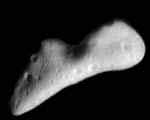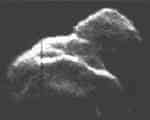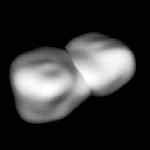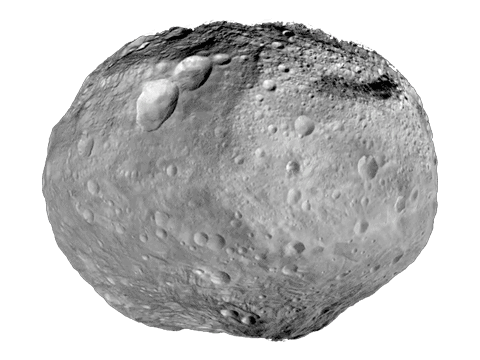Unlike the other small bodies in the solar system, comets have been known since antiquity. There are Chinese records of Comet Halley going back to at least 240 BC. The famous Bayeux Tapestry, which commemorates the Norman Conquest of England in 1066, depicts an apparition of Comet Halley.
Asteroids History
Several hundred thousand asteroids have been discovered and given provisional designations so far. Thousands more are discovered each year. There are undoubtedly hundreds of thousands more that are too small to be seen from the Earth. There are 26 known asteroids larger than 200 km in diameter. Our census of the largest ones is now fairly complete: we probably know 99% of the asteroids larger than 100 km in diameter. Of those in the 10 to 100 km range we have cataloged about half. But we know very few of the smaller ones; there are probably considerably more than a million asteroids in the 1 km range.
The total mass of all the asteroids is less than that of the Moon.

The largest asteroid by far is 1 Ceres. It is 974 km in diameter and contains about 25% of the mass of all the asteroids combined. The next largest are 2 Pallas, 4 Vesta and 10 Hygiea which are between 400 and 525 km in diameter. All other known asteroids are less than 340 km across.

There is some debate as to the classification of asteroids, comets and moons. There are many planetary satellites that are probably better thought of as captured asteroids. Mars's tiny moons Deimos and Phobos, Jupiter's outer eight moons, Saturn's outermost moon, Phoebe, and perhaps some of the newly discovered moons of Saturn, Uranus and Neptune are all more similar to asteroids than to the larger moons. (The composite image at the top of this page shows Ida, Gaspra, Deimos and Phobos approximately to scale.)

There also a few "asteroids" (designated as "Centaurs") in the outer solar system: 2060 Chiron (aka 95 P/Chiron) orbits between Saturn and Uranus; the orbit of 5335 Damocles ranges from near Mars to beyond Uranus; 5145 Pholus orbits from Saturn to past Neptune. There are probably many more, but such planet-crossing orbits are unstable and they are likely to be perturbed in the future. The composition of these objects is probably more like that of comets or the Kuiper Belt objects than that of ordinary asteroids. In particular, Chiron is now classified as a comet.
Picture of Asteroids












